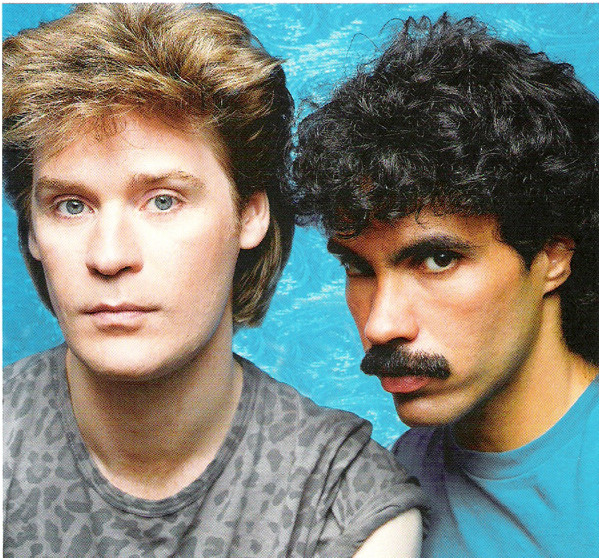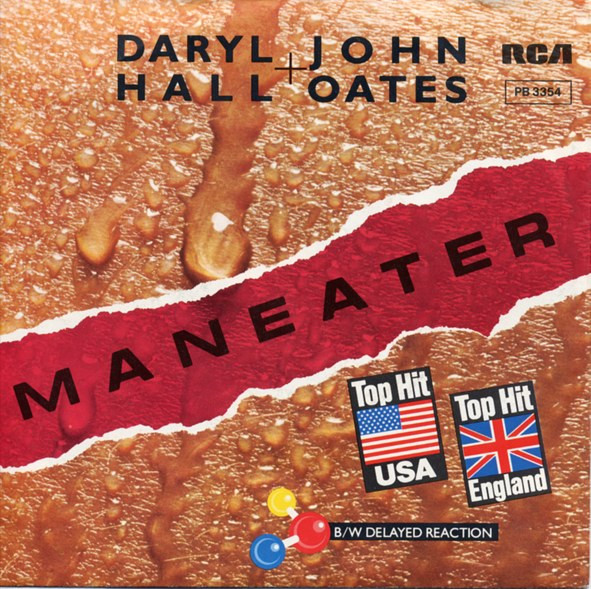The 1980s gifted the world with countless iconic songs, and among them stands Hall & Oates’ “Maneater,” a track that continues to captivate listeners decades later. Before diving deep into what makes this song a timeless classic, it’s worth noting the initial search confusion. Typing “Maneater” into a search engine might surprisingly lead you to Nelly Furtado’s track of the same name. However, for true aficionados of musical brilliance, the original and unparalleled “Maneater” belongs to the legendary duo, Hall & Oates. Let’s explore why this song from the album “H2O” remains an enduring anthem.
 Hall & Oates (Band)
Hall & Oates (Band)
A Chart-Topping History
“Maneater” wasn’t just another song on an album; it was a phenomenon. Released as part of Hall & Oates’ 1982 album “H2O,” this track quickly ascended to the pinnacle of the Billboard Hot 100 charts. On December 18, 1982, “Maneater” seized the Number One spot, holding it for an impressive four weeks. This achievement surpassed their previous record set by “Kiss on My List,” solidifying “Maneater” as one of their most successful hits. Interestingly, despite its popularity, only one official version of this song exists – the album version, clocking in at four minutes and twenty-five seconds.
The Anatomy of a Hit: A Musical Review
What makes “Maneater” so distinct? It’s the song’s unique sonic architecture. Contrary to typical pop song structures, “Maneater” boldly opens with a bass guitar as the lead instrument. This unexpected choice immediately sets the tone, drawing listeners into its intriguing soundscape. The bassline is then layered with synthesizer effects around the 11-second mark, and the saxophone joins the melody at 27 seconds. This combination of bass guitar and saxophone is nothing short of magical, creating a compelling and memorable instrumental foundation for the song.
The composition itself is genre-bending, subtly weaving together elements of classic rock, jazz, blues, and pop. This blend, while seemingly unconventional, works seamlessly, resulting in a sound that is both sophisticated and irresistibly catchy. Even without vocals, the instrumental version of “Maneater” is enough to get your foot tapping and head nodding, showcasing its inherent musicality.
Daryl Hall’s vocals enter at the 43-second mark, and his voice is perfectly suited to the song’s vibe. Deep, smooth, and crisp, his vocal delivery complements the rhythm and instrumentation flawlessly. The tempo of “Maneater” is upbeat, yet it maintains a laid-back momentum, creating a captivating groove.
The chorus, where the word “Maneater” is first heard, arrives at 1 minute and 27 seconds. It repeats twice before transitioning into a brief instrumental interlude punctuated by playful synthesizer effects. The song maintains its tempo and captivating rhythm as it moves into the second verse, further enhancing its addictive quality. It’s the kind of song that, even at a moderate pace, keeps you hooked and wanting more. Its rhythm makes it a perfect companion for activities like cycling, providing a steady and engaging beat.
The chorus returns at 2 minutes and 15 seconds, highlighting some of the song’s most memorable and slightly quirky lyrics, including the iconic line, “She’ll chew you up.” These lyrics, coupled with the song’s overall feel, take on a whole new dimension when paired with the music video – a visual experience that is, to put it mildly, uniquely 80s. While the lip-syncing might be questionable and Daryl Hall’s on-screen discomfort noticeable, these elements become part of the video’s charm, reflecting the aesthetic of the era. The music video adds another layer to the interpretation of “Maneater,” prompting viewers to ponder the meaning behind the lyrics.
 Album Art
Album Art
The Saxophone Solo and Lasting Impact
A standout moment in “Maneater” is undoubtedly the saxophone solo, commencing at 2 minutes and 43 seconds and extending until 3 minutes and 26 seconds. This solo is a dynamic journey, a rollercoaster of musical highs and lows that keeps the listener utterly engaged. It’s a testament to the song’s arrangement and the musicianship involved.
Following a drawn-out “Ooooh” from John Oates, the chorus returns for a final, extended run, looping four times. Daryl Hall interjects with vocal ad-libs, including the memorable “The Woman Is Wild, Oooh” line. The song then gradually fades out, concluding at 4 minutes and 25 seconds, leaving a lasting impression.
“Maneater” by Hall & Oates is more than just an 80s hit; it’s a masterclass in song composition and arrangement. Its unique instrumentation, catchy melody, and Daryl Hall’s distinctive vocals have cemented its place as a timeless classic. Whether you’re analyzing its musical intricacies or simply enjoying its infectious groove, “Maneater” continues to prove its enduring appeal.
Explore the lyrics: [Link to lyrics (example link)]
Listen to “Maneater”: [Link to song (example link)]
Watch the official music video:

